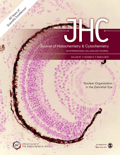
JOURNAL OF HISTOCHEMISTRY & CYTOCHEMISTRY
Scope & Guideline
Advancing the Frontiers of Cellular Understanding
Introduction
Aims and Scopes
- Histochemical Techniques:
The journal emphasizes the development and application of histochemical techniques to visualize cellular components, enabling researchers to better understand tissue structure and function. - Cytochemical Analysis:
Research published in the journal often includes cytochemical analyses that reveal cellular processes and interactions at a molecular level, contributing to the understanding of various diseases. - Immunohistochemistry and Imaging Techniques:
A core focus is on immunohistochemistry and advanced imaging modalities, providing insights into protein expression and localization in tissues. - Pathological and Developmental Studies:
The journal supports studies related to pathology and developmental biology, exploring how histochemical and cytochemical methods can elucidate disease mechanisms and developmental processes. - Cross-Species Comparative Studies:
There is a notable emphasis on comparative studies across different species, which helps in understanding evolutionary aspects of histochemical and cytochemical phenomena.
Trending and Emerging
- Multiplex Imaging Techniques:
Recent publications highlight a trend towards multiplex imaging techniques that allow for the simultaneous visualization of multiple markers, enhancing the understanding of cellular heterogeneity and interactions. - Cancer Microenvironment Studies:
A significant increase in research related to the tumor microenvironment, including the study of cancer stem cells and their interactions with immune cells, indicates a growing interest in understanding cancer biology at a more nuanced level. - Molecular Pathology and Biomarkers:
Emerging themes include the identification of molecular biomarkers for various diseases, particularly in cancer, reflecting a trend towards personalized medicine and targeted therapies. - Advanced Imaging and Digital Pathology:
The use of digital pathology and advanced imaging techniques is on the rise, enabling quantitative analyses and improved diagnostic capabilities in histopathology. - Integration of AI and Machine Learning:
There is a notable trend towards the integration of artificial intelligence and machine learning in histochemical analysis, which enhances data interpretation and facilitates large-scale studies.
Declining or Waning
- Traditional Histological Techniques:
There has been a noticeable decline in papers focusing on traditional histological techniques as researchers increasingly adopt more advanced imaging and molecular techniques that provide higher resolution and more detailed insights. - Basic Histochemical Methodologies:
Papers centered on basic histochemical methods without the integration of new technologies or applications are becoming less common, as the field progresses towards more complex and multifaceted approaches. - Single Parameter Analysis:
There is a growing shift away from studies that analyze single parameters in isolation, with a trend towards multiplexing and systems biology approaches that assess multiple variables simultaneously.
Similar Journals
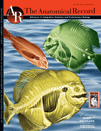
Anatomical Record-Advances in Integrative Anatomy and Evolutionary Biology
Bridging Disciplines for a Deeper Understanding of Life.Anatomical Record-Advances in Integrative Anatomy and Evolutionary Biology, an esteemed journal published by WILEY, serves as a pivotal platform for scholars in the fields of anatomy, biotechnology, ecology, evolutionary biology, and histology. With an ISSN of 1932-8486 and an E-ISSN of 1932-8494, this journal has demonstrated its academic rigor by maintaining a Q2 ranking across multiple relevant categories, including Anatomy and Biotechnology, and consistently achieving a high Scopus ranking in its respective fields. Its scope, covering integrative approaches to anatomical research and evolutionary studies, fosters interdisciplinary collaboration and innovation. Researchers and practitioners can access the journal through various open-access options, ensuring that groundbreaking findings are disseminated widely. As a vital resource for advancing knowledge and exploring emerging trends, this journal greatly contributes to the understanding of biological systems and evolutionary processes, making it an essential read for those dedicated to pushing the boundaries of their respective disciplines.
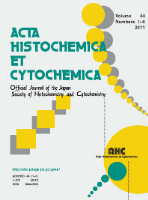
ACTA HISTOCHEMICA ET CYTOCHEMICA
Showcasing Innovations in Tissue and Cell AnalysisACTA HISTOCHEMICA ET CYTOCHEMICA, published by the Japan Society of Histochemistry & Cytochemistry, is a reputable journal specializing in the fields of histochemistry, cytochemistry, and related disciplines. With an ISSN of 0044-5991 and an E-ISSN of 1347-5800, this journal provides a crucial platform for researchers to disseminate their findings and advances in the study of cellular and tissue structures at a biochemical level. The journal, which has been in publication since 1968, holds a commendable position within several academic categories, achieving a Q3 ranking in Biochemistry and Cell Biology and a Q2 ranking in both Histology and Pathology and Forensic Medicine as of 2023. Its Scopus rankings further affirm its impact, particularly within the fields of Histology and Pathology. Although it does not offer open access, ACTA HISTOCHEMICA ET CYTOCHEMICA remains an essential resource for academicians, professionals, and students seeking to stay informed on the latest trends and research developments in histochemical and cytochemical processes. The journal is located at C/O Nakanishi Printing Co Ltd, Shimodachiuri-Ogawa, Kamigyo-ku, Kyoto 602-8048, Japan, making it a significant outlet for scientific communication within and beyond the Japanese research community.
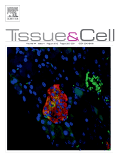
TISSUE & CELL
Exploring the Frontiers of Cell Biology and MedicineTISSUE & CELL is a prominent academic journal, published by CHURCHILL LIVINGSTONE, that has been at the forefront of research in the fields of cell biology, developmental biology, and miscellaneous areas of medicine since its inception in 1969. With a strong focus on high-quality research, TISSUE & CELL has established itself within the academic community, holding a Q3 ranking in both Cell Biology and Developmental Biology, and a Q2 ranking in Medicine as of 2023. The journal aims to disseminate significant findings that contribute to the understanding of tissue structure and function, helping to bridge the gap between basic biological research and clinical applications. While it operates on a subscription basis and does not currently offer Open Access options, the journal remains a vital resource for researchers, professionals, and students interested in cutting-edge developments in the biological sciences. The journal's address is located in the scenic city of Edinburgh, further establishing its academic heritage in the United Kingdom.
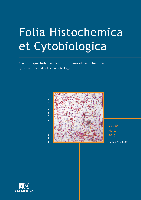
FOLIA HISTOCHEMICA ET CYTOBIOLOGICA
Transforming Understanding of Cellular Dynamics Since 1984FOLIA HISTOCHEMICA ET CYTOBIOLOGICA, an esteemed journal published by VIA MEDICA, serves as a vital platform for researchers and professionals in the fields of histology, pathology, and cytobiology. With an ISSN of 0239-8508 and E-ISSN of 1897-5631, this Open Access journal has been disseminating significant findings since 1984, offering free access to a broad audience of scientists and academics. Based in Poland, this journal focuses on critical advancements in the study of cellular structures and functions, contributing substantially to the understanding of various diseases and biological processes. The journal currently holds a respectable impact factor, ranking in the Q3 category for Histology and miscellaneous Medicine, and Q2 for Pathology and Forensic Medicine as per the 2023 metrics. With its commitment to quality research and an inclusive publishing approach, FOLIA HISTOCHEMICA ET CYTOBIOLOGICA is poised to continue influencing its fields significantly through 2024 and beyond.
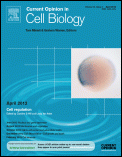
CURRENT OPINION IN CELL BIOLOGY
Transforming Understanding of Cellular DynamicsCURRENT OPINION IN CELL BIOLOGY, published by CURRENT BIOLOGY LTD, serves as a vital resource for scholars and professionals in the dynamic field of cell biology. With a solid Q1 ranking and impressive Scopus ranking of #33 out of 285 in the category of Cell Biology, this journal is recognized for its high impact and relevance among its peers, boasting an excellent percentile ranking of 88th. Established in 1989, it provides insightful reviews and perspectives that capture the latest developments and emergent trends in cellular research, making it indispensable for those aiming to deepen their understanding of cellular mechanisms and innovations. While the journal does not offer open access, its carefully curated content ensures that subscribers receive top-tier scholarly discourse. Situated in the heart of the United Kingdom, CURRENT OPINION IN CELL BIOLOGY continues to shape the conversation in a field that is critical to advancements in biochemistry, genetics, and molecular biology.

Medical Molecular Morphology
Exploring the Intersection of Histology and Therapy.Medical Molecular Morphology, published by SPRINGER JAPAN KK, stands as a significant resource in the fields of medicine and molecular biology, bridging critical insights between histological studies and modern therapeutic approaches. With an ISSN of 1860-1480 and E-ISSN of 1860-1499, this journal has evolved since its inception in 1996 and has continued to provide a platform for innovative research through 2024, establishing its relevance particularly in the realms of medical pathology and molecular morphology. Although categorized as Q3 in Medicine (miscellaneous) and Q4 in Molecular Biology per the 2023 quartiles, the journal's unique contributions cannot be understated, as evidenced by its Scopus rankings, which place it in the 52nd percentile for Pathology and 19th percentile for Molecular Biology. The journal’s mission focuses on disseminating valuable findings that enhance the understanding of cellular and molecular structures and their implications in health and disease. As access options are not currently open access, it remains essential for professionals and researchers to consider the journal's contributions as they pursue academic growth and impactful research in these dynamic fields.
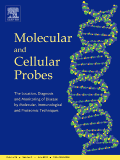
MOLECULAR AND CELLULAR PROBES
Driving Progress in Molecular and Cellular InsightsMOLECULAR AND CELLULAR PROBES, published by Academic Press Ltd - Elsevier Science Ltd, stands as a prominent journal at the intersection of cell and molecular biology. With an ISSN of 0890-8508 and an E-ISSN of 1096-1194, this journal has consistently contributed to the scientific discourse since its inception in 1987, converging its scholarly content through to 2024. As a member of Q3 in both Cell Biology and Molecular Biology categories, it provides a platform for innovative research and critical insights into cellular mechanisms, signaling pathways, and molecular interactions. Its Scopus rankings position it within the top half of its categories, fostering a vibrant academic community that supports the exploration and advancement of biochemistry, genetics, and molecular biology. Although it does not currently offer Open Access, the high-quality peer-reviewed articles published in MOLECULAR AND CELLULAR PROBES are invaluable resources for researchers, professionals, and students who seek to stay at the forefront of breakthroughs in these essential fields.

PERIODICUM BIOLOGORUM
Pioneering Discoveries in Biochemistry and GeneticsPERIODICUM BIOLOGORUM is a well-established interdisciplinary journal published in Croatia that focuses on advancing the fields of agricultural and biological sciences, biochemistry, genetics, and molecular biology, along with general medicine. With its roots dating back to 1980, the journal has been an essential platform for the dissemination of original research, reviews, and theoretical studies, fostering collaboration and dialogue among researchers within these diverse areas. While currently holding a Q4 quartile ranking in several categories, including agricultural and biological sciences, biochemistry, and general medicine, it provides a significant opportunity for authors seeking to contribute to the body of knowledge in these sectors. Although Open Access options are not available, the journal's rich history and commitment to quality scholarship make it a valuable resource for professionals, researchers, and students alike, aiming to stay informed about current trends and advancements in biological research and its applications.

Frontiers in Cell and Developmental Biology
Fostering collaboration for groundbreaking biological discoveries.Frontiers in Cell and Developmental Biology is a leading open-access journal published by FRONTIERS MEDIA SA, dedicated to advancing the understanding of fundamental biological processes at the cellular and developmental levels. Since its inception in 2013, the journal has positioned itself as a cornerstone of research in its field, achieving esteemed Q1 quartile rankings in both Cell Biology and Developmental Biology for 2023. With a robust Scopus ranking of #13 out of 82 in Developmental Biology and #67 out of 285 in Cell Biology, it represents a vital platform for innovative research and scholarly discourse. The journal provides a comprehensive and accessible avenue for researchers, professionals, and students alike to share high-quality findings and insights into cellular mechanisms and developmental processes, fostering collaboration and knowledge exchange in the global scientific community. Based in Lausanne, Switzerland, Frontiers in Cell and Developmental Biology is committed to open science, ensuring that all articles are freely accessible to the public, thereby broadening the impact of research in the biological sciences.

INTERNATIONAL JOURNAL OF EXPERIMENTAL PATHOLOGY
Exploring the Frontiers of Pathological ResearchINTERNATIONAL JOURNAL OF EXPERIMENTAL PATHOLOGY, published by Wiley, is a leading peer-reviewed journal dedicated to the field of experimental pathology. With an ISSN of 0959-9673 and E-ISSN 1365-2613, the journal has been a vital resource for researchers and professionals since its inception in 1990, covering a broad spectrum of topics within pathology, cell biology, and molecular biology. The journal's relevancy is underscored by its Q2 ranking in Pathology and Forensic Medicine and Q3 rankings in both Cell Biology and Molecular Biology, as of 2023, reflecting its significant contribution to the scientific community. Although it does not currently offer open access options, readers can benefit from its insightful research articles and reviews that guide advancements in diagnostic pathology and therapeutic strategies. As the journal continues to evolve, it remains committed to facilitating the exchange of innovative ideas and findings that drive progress in experimental pathology and related fields, making it an indispensable platform for scientists, clinicians, and students alike.